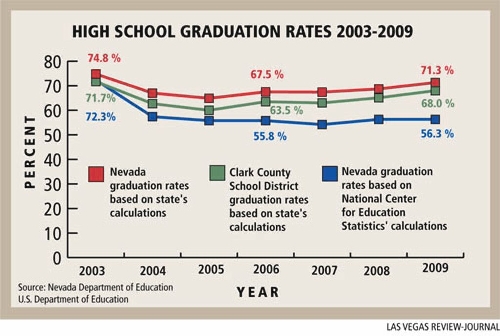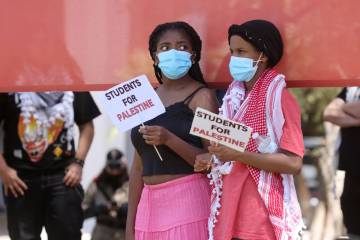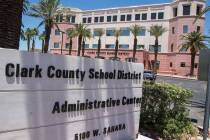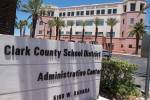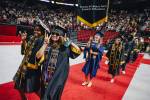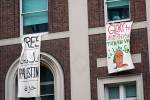Nevada education chief finds fault with graduation report
The flip of a coin.
Those are about the odds of a child graduating from high school in Nevada, according to a recent report described as flawed by Nevada's superintendent of public schools.
"It sounds like an excuse, but the report makes us look much worse than we are," said state Superintendent Keith Rheault, pointing out problems with the way figures were calculated for the report from the children's advocacy group America's Promise Alliance, founded by former Secretary of State Colin Powell.
In the alliance report, Nevada stands out for its low 56 percent graduation rate in 2009, which showed that about one out of two freshmen in 2005 graduated four school years later.
The state landed at this rate after the steepest decline of any state -- 15 percentage points -- from 2002 to 2009, according to the report released this week. That's a stark contrast to the nation as a whole, which improved its graduation rate by 3.5 percentage points during that time.
But the figures for Nevada cited in the report simply aren't right, Rheault argues. The state's self-reported graduation rate for 2009 is 71.3 percent, which is still low but much better than the figures reported by the alliance.
"I stand by the grad rates we've been putting out as accurate," Rheault said.
Why the discrepancy?
The alliance admitted in its report that it used estimates -- not exact figures -- for about 15 states, including Nevada.
"Through the 2000s, different calculations resulted in different rates, causing confusion and a limited ability to track progress," reads the report.
For some states, the alliance divided a state's total number of graduating seniors by an estimate of all incoming freshman four years prior. The only problem is that Nevada used to count credit-deficient sophomores as freshmen, which would misleadingly worsen the graduation rate. Also, the system of only counting the beginning and end number of students doesn't take into account those who transferred in and out of state in the meantime, which also affects the graduation rate. That's especially true in Nevada, which has schools with high student transiency rates. Roughly three out of every 10 students will leave before a school year ends.
The state has calculated that into its graduation rate for the past few years, creating a more accurate depiction for Nevada's education accountability report.
The good news is that discrepancies in calculating the graduation rate will end this spring as the federal government implements a universal system for determining states' figures. Up to now, federal reporting just compared the number of freshmen to graduates four years later. From now on, it will use the number of first-time freshmen, and factor in students who then transfer in or transfer out during the four-year march to graduation, which Nevada already does.
"In the future, it will be clearer," Rheault said.
No matter the method, there's no debating that Nevada has a history of low graduation rates, said Pedro Martinez, deputy superintendent of the Clark County School District, which enrolls about two-thirds of all students in the state.
The district, which started this school year with 10,700 of its 20,600 seniors behind on credits or blocked by the proficiency exams Nevada requires students to pass to earn a diploma, is on an improvement course.
Through a wave of efforts to help seniors meet graduation requirements, the district expects 15,000 to 16,000 seniors to don their cap and gowns this spring. That's a marked improvement from the 9,900 seniors on track in August.
The shift started last fall when district officials gave all 49 high school principals a list of their credit-deficient students, ordering principals to create individual student plans based on their transcripts. The plans include a mentor-teacher to provide guidance and support in weekly meetings with the students. The district made principals accountable for success.
On top of that, the district has pushed students into online courses so they could quickly repeat the courses they failed. A year that started with an approaching 41 percent graduation rate is now expected to finish with a 66 percent graduation rate.
The work will continue and expand into next year, said Martinez, adding: "We don't want to dwell on the statistics from the past."
Contact reporter Trevon Milliard at
tmilliard@reviewjournal.com or 702-383-0279.



